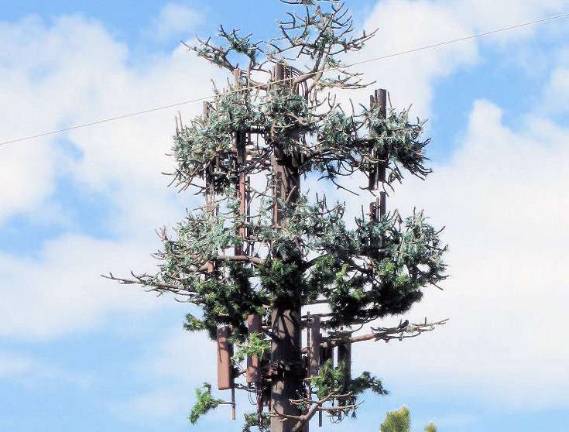Warwick Valley BOE rejects cell tower proposal

By John Haughey
WARWICK — The Warwick Valley School Board on Monday formally ended negotiations with AT&T over a proposed 120-foot cell phone tower at the closed Pine Island Elementary School.
The board unanimously opted to discontinue discussions with the telecom giant's subsidiary, New Cingular Wireless, in a straw poll conducted after a 20-minute presentation by AT&T and before fielding comments from nine area residents who all opposed the proposal.
The school board's rejection presumably means the Pine Island Fire District's firehouse on County Route 1 remains the prime - although highly contested - candidate to house the cell phone tower AT&T says is desperately needed in the area.
"This is a good thing for us," PIFD Commissioner Larry Kernath said. "Now they have to come back to us."
PIFD commissioners voted 3-1 on June 19 to continue talking with AT&T over its proposed 150-foot cell phone tower and emergency communications antenna at the firehouse.Negotiations had stalled when AT&T, facing stiff opposition from Pine Island residents, initiated talks with the school district over placing a tower at Pine Island Elementary on School House Road, which was closed in June 2011, rather than at the firehouse.
New Cingular Wireless secured a preliminary lease agreement with the PIFD in May 2013 to erect a cell phone tower. The firehouse proposal has been hotly contested, particularly by nearby residents, citing concerns about health effects from exposure to cell tower radio frequency (RF) waves, devalued home values and the visual blemish of a 150-foot pole looming above Pine Island.
Other options
The school board's rejection of AT&T's proposal, as well as the stalled negotiations with the fire district, has prompted several alternative proposals by at least two Pine Island landowners.
In May, Pine Island resident Ray Ruszkiewicz offered the PIFD several parcels that could house a proposed tower.
On Monday, Genna Field offered a parcel she owns on Transport Lane as a possible cell tower site.
The Transport Lane property is "out of sight, away from families and homes," Field said, noting she would donate AT&T's lease payments "back to the community."
Field said despite making the offer to the PIFD and New Cingular Wireless, she has not received a response.
"I will do whatever" is necessary to ascertain if her property is viable as a cell phone tower site.
AT&T was offering the school district the same rental income agreement it proposed to the fire district - anywhere from $24,000 to $60,000 a year in rental income, potentially generating as much as $300,000 over the five-year span.
AT&T site manager Klaus Wimmer said the 120-foot "tree pole" would be within a 40-by-60-foot fenced compound with an equipment shed. The site would be unmanned and only opened for routine maintenance "once every two or three months," he said.
AT&T would install its own electric meter and pay its own bills, Wimmer said. "There would be no cost to the district whatsoever," he said, adding that the Pine Island area is in "desperate need of (cellular) coverage."
'Lousy' reception
Board member Robert Howe, a Pine Island resident, agreed that cell phone reception in the area is "lousy," but said a cell phone tower at Pine Island Elementary "would create problems for the district."
"The firehouse seemed to be the prime location. For various reasons, it got stalled," he said. "We would run into the same things here with it at the school."
"I don't think this is something we want to get into," board member Keith Parsons said, noting if the school district wants to lease Pine Island Elementary it should be to "somebody who would bring jobs" to Pine Island.
The tower proposal is a distraction that should be dismissed, board member Sharon Davis said. The district needs to "focus on kids," she added.
PIFD Commissioner George Haas, the dissenting vote in the PIFD's June 19 3-1 decision to continue negotiations with AT&T, was one of the nine people who addressed the BOE after it cast a straw poll to reject the cell tower proposal.
"I believe it is in the best interest of the fire district for it to complete the project - or ditch the project - before you guys get involved," Haas told the school board.
AT&T radio frequency (RF) engineer Dan Panesso said RF waves emitted by cell phone towers fall far below the safety thresholds established by federal and state regulations. Exposure levels are "minute," he said, noting that there is more RF exposure in the kitchens of most homes than from cell phone towers.
That reassurance was soundly dismissed by Pine Island residents who say a bevy of studies say otherwise.
"I am grateful that you guys didn't allow money to overcome" concern for the community, Pine Island resident Rachel Tetrault said. "I don't want to live less than 50 feet from a cell tower. I don't want it in Pine Island. I don't want it anywhere near me."